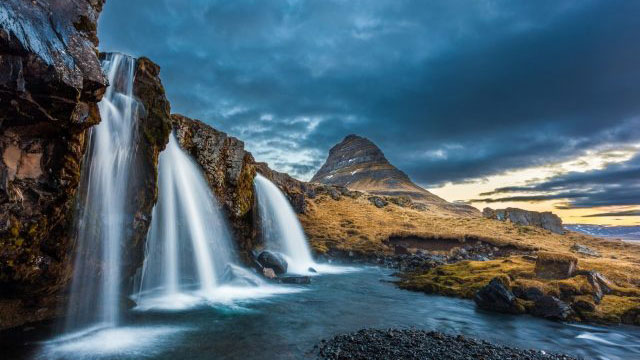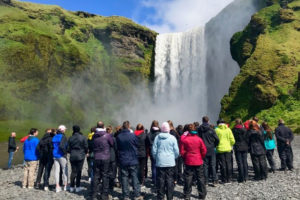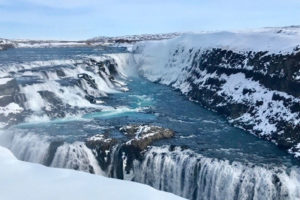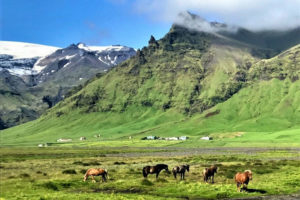
‘Last year, over 2 million tourists visited Iceland. This year, in the wake of the pandemic, only a fraction of that number will make the journey. But I will be one of them.’
Val Vannet, Geography Field Study Tutor
‘Last year, over 2 million tourists visited Iceland. This year, in the wake of the pandemic, only a fraction of that number will make the journey. But I will be one of them.’
Val Vannet, Geography Field Study Tutor
Seasoned geographer, educator and long-time Field Study Tutor, Val Vannet is no stranger to teaching out in the field, particularly Iceland. Confessing to a 16-year love affair with the country and flying out herself in October, she believes a post-pandemic Iceland won’t be too dissimilar from when she first visited in 2004, and explains why now’s the best time to visit.
I was one of just 300,000 foreign visitors to the country that year. It was a significant year for tourism in Iceland, because for the first time annual tourist numbers overtook the total resident population.
Since then, tourist numbers have grown exponentially, particularly after the eruption of Eyjafjallajökull in 2010 which, despite the disruption of the ash cloud, raised the profile of Iceland globally.
Following the favourable exchange rate in the aftermath of the economic crash, and a burgeoning range of flight options, Iceland’s now much more accessible. The last decade has seen a huge increase in school group travel to the country. And there’s a growing demand for specialist Field Study Tutors who provide practical support and geographical expertise to groups.
Have a nosey at our Iceland Tourism Boom poster
‘Iceland’s currently one of the safest locations on our planet’
Back in February at Keflavik, as I bid farewell to the group with whom I’d spent the most glorious week (winter in Iceland is stunning), I was already anticipating the groups I’d be leading at Easter. A month later, we were in lockdown, and travel plans were on hold.
‘By early June the borders opened once more to an Iceland that is safe and ready for travellers.’
‘By early June the borders opened once more to an Iceland that is safe and ready for travellers.’
But now, as countries around the world are inching out of lockdowns and devising strategies to cope with ‘new normality’, a small island in the North Atlantic has suppressed its Covid-19 infection rate to such low levels that it’s currently one of the safest locations on our planet – barring an earthquake or volcanic eruption!
With its borders temporarily closed and forensic test, track and trace strategies, Iceland gained a foothold over the virus early on and drove the infection rate down to minimal levels in just a few short weeks. By early June the borders opened once more to an Iceland that is safe and ready for travellers.
‘The pandemic has allowed Iceland to catch its breath, reconnect with nature and reclaim the land.’
‘The pandemic has allowed Iceland to catch its breath, reconnect with nature and reclaim the land.’
Just how different will Iceland be?
In a world still wary of international travel, tourist numbers are predicted to remain very low this year and unlikely to reach the levels of 2018-19, until at least 2024 at the earliest.
For the foreseeable future this will be the Iceland I first visited back in 2004 – an Iceland with uncrowded beauty spots, when there were just half a dozen tourists at Skogafoss or Geysir (with no one taking selfies!); roads where you barely passed a car and if you did, it wouldn’t belong to a rental company; and an Iceland where the travellers you met were most likely to be Icelanders.
This summer, Icelanders are enjoying a variety of financial incentives for ‘staycationing’. Reports in the Icelandic press describe how the pandemic has allowed the nation to catch its breath, reconnect with nature and reclaim the land – and there’s never been a better time to visit.
‘I’ve booked my October flights – possibly at a never-to-be-repeated price – and now I’m counting down the days.’
‘I’ve booked my October flights – possibly at a never-to-be-repeated price – and now I’m counting down the days.’
Now’s the best time to visit
The tourist infrastructure is much better than it was in 2004, but there are fewer tourists using it. Even when 2 million tourists did fly in, Iceland (the size of England) was never over-crowded. But for now, it’s almost empty.
The landscape, the wildlife, the grandeur and the beauty are still there to be enjoyed by those who venture. And I, for one, simply can’t wait to get there.


